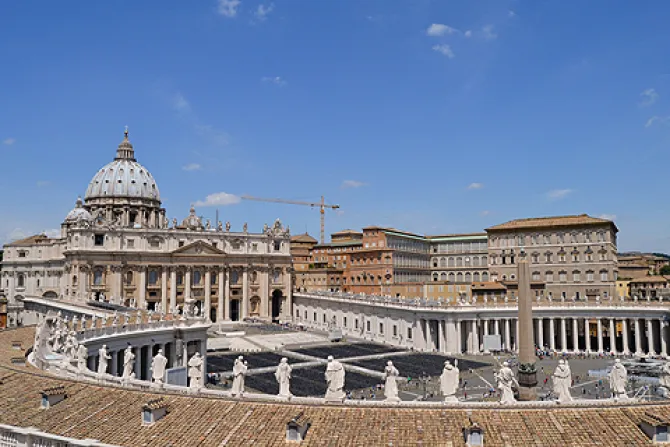Vatican City, Jan 5, 2015 / 11:32 am
In creating 20 new cardinals – 15 of whom will be cardinal electors – Pope Francis has continued to set his sights on the world's peripheries, and at the same time he began designing the College of Cardinals in order to push forward his reforms.
Among the new cardinal electors, only Archbishop Dominique Mamberti, prefect of the Apostolic Signatura, hails from the Roman curia; he had previously served, since 2006, as the Vatican's Secretary for Relations with States.
Most of the new red birettas hail from the peripheries of the world, and follow the rationale of "the universality of the Church," as Fr. Federico Lombardi, director of the Holy See press office, put it in a written note delivered Jan. 4.
With the Feb. 14-15 consistory at which the new cardinals are officially appointed, the weight of the curia will be diminished in the election of the next Bishop of Rome.
At the moment, there are 33 curial members among the 110 voting cardinals, that is, 30 percent of the conclave. After the consistory, there will be 34 voting cardinals from the curia, among 125, a reduction of three percent.
The new outline of the college of cardinals may be decisive for what concerns the Church reforms Pope Francis has in mind.
Pope Francis desires that the high ranks of the Church be committed to a continual dialogue and discussion, and for this purpose he is using consistories as a tool to foster an open discussion.
Pope Francis enlarged the agenda of October 2014 consistory – scheduled in order to vote for two canonizations – convoking the cardinals to discuss the situation in the Middle East.
It was the second time Pope Francis convoked a consistory to discuss a timely issue.
Earlier, Pope Francis had convoked a February 2014 consistory to discuss the family, opening the discussion which took place in the extraordinary synod. The consistory took place on the eve of Pope Francis' first consistory to create new cardinals.
Likewise, Pope Francis has convoked an ordinary consistory to discuss curial reform Feb. 12-13, on the eve of the consistory to create new cardinals, scheduled for Feb. 14.
The consistory will take place after the seventh gathering of the Council of Cardinals, scheduled Feb. 9 -11.
A first draft of Curia reform was presented during the Pope's regular meeting with the chief of Vatican dicasteries Nov. 24, 2014.
According to the draft, the Pontifical Councils for Justice and Peace, Migrants, Cor Unum, Health Care and the Pontifical Academy for Life would be merged into a new Congregation for Justice and Peace. A new Congregation for Laity and Family was intended to enroll the Pontifical Councils for Laity and for the Family.
The draft was widely discussed during the meeting, and was reviewed at the following meeting of the Council of Cardinals, held Dec. 9-11.
The Council of Cardinals will once again discuss the draft, taking into consideration some criticisms of the draft which emerged during the meetings, and then this draft will be discussed at the following consistory.
As the members of the Roman curia will have less weight, it is likely that the balance of the discussion will swing toward the residential archbishops, who may have a decisive word in advancing curial reform.
Despite some minor adjustments, the final decision on curial reform should not come out soon. In the interview granted Dec. 7, 2014 to 'La Nacion', Pope Francis stressed that "reforming the Curia will take a long time, this is the most complex part," and anticipated that reform will not be ready within 2015.
The international and 'peripheries' sway of the College of Cardinals may help the Holy Father to speed up the process of curial reform, overcoming criticisms and internal resistance: this is how the next consistory could advance reforms.


